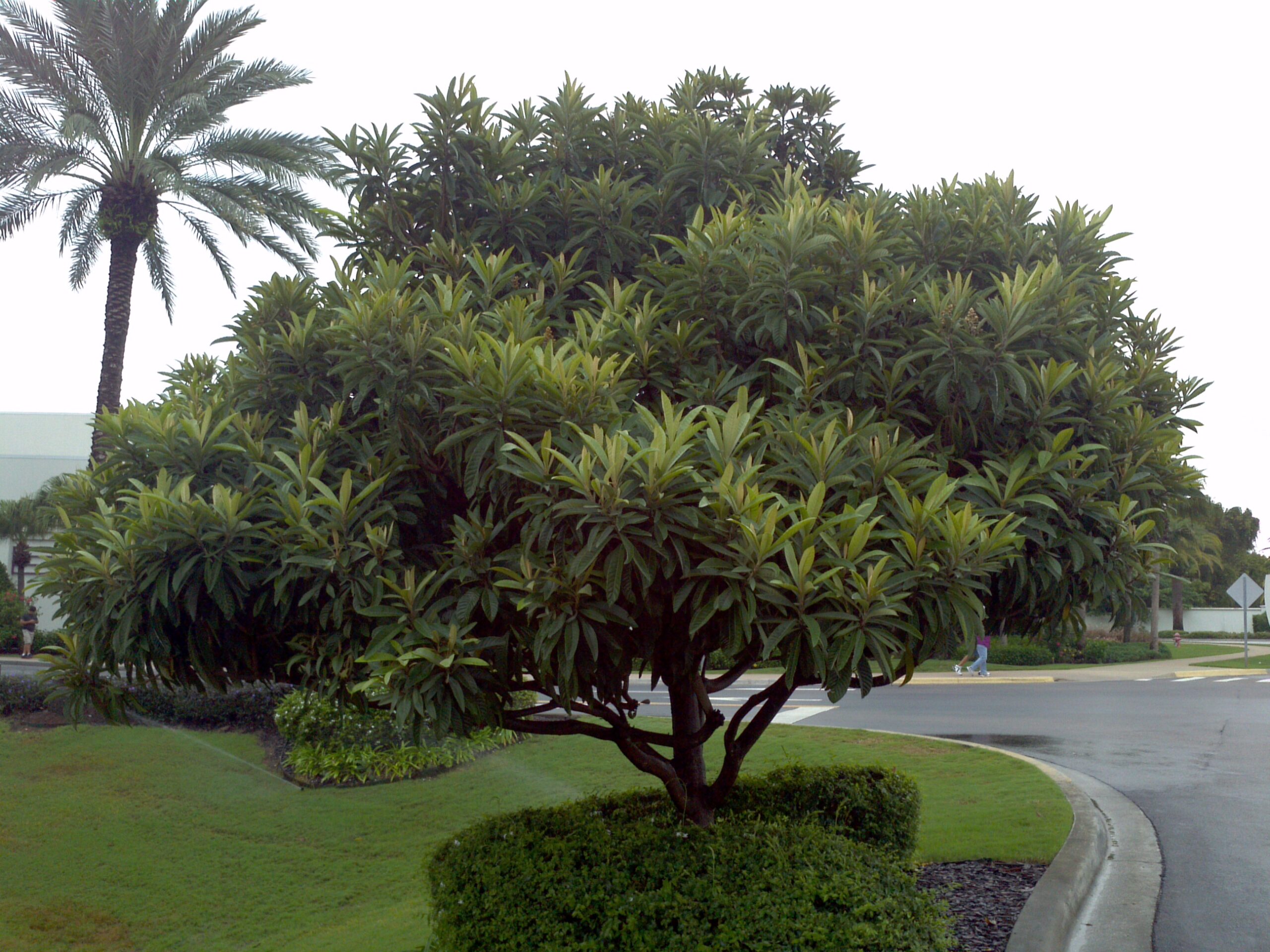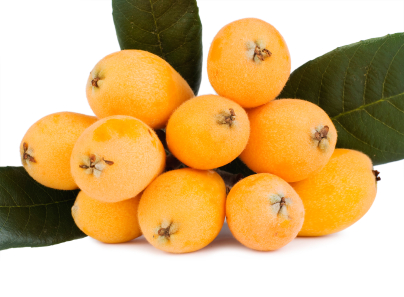This useful evergreen is a great choice for homeowners with smaller yards as it is both a shade and fruit tree in one.
Despite its name, the Loquat is not related to the kumquat. It is also known as a Japanese plum, which may give you a better idea of what to expect from the fruit. The tree is bushy and grows to an average height of 25 feet. Occasional pruning keeps it manageable. The leaves are large, often eight inches long or more, dark green above, rust-colored and slightly furry below and abundant, providing plenty of shade for a garden bench or swing.
Clusters of creamy white flowers bloom in the fall. The bright yellow to yellow-orange fruits appear about four months after the flowers and make a lively contrast against the dark foliage. Selective thinning can increase the size of remaining fruit. Loquats have better flavor when ripened on the tree. Wait until they are slightly soft before harvesting. Pop out the seed and enjoy.
Although the Loquat is an evergreen, they do drop leaves year-round. To reduce clean up chores, plant this tree in a flowerbed where fallen leaves can be contained and converted to mulch.


